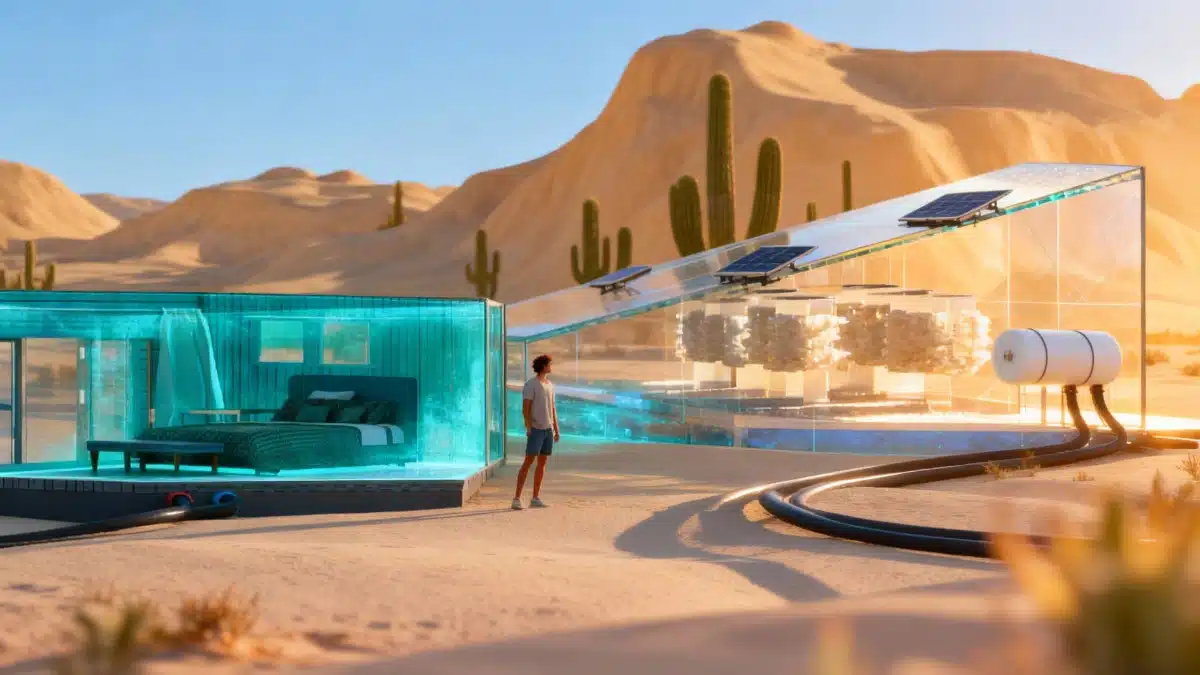Imagine keeping your cool this summer—literally—without ever plugging in a power-hungry air conditioner or racking up a monstrous electricity bill. It sounds like something out of science fiction, but this dazzling innovation is turning fiction into fact, offering hope and a fresh breeze to places where modern cooling is often just a pipe dream.
A World Sweating for Solutions
Climate change is heating things up around the globe, and the stakes have never been higher. Not only are we forced to endure sweltering temperatures, but we’re also asked to cut back on our ever-growing appetite for energy. Air conditioning, once a luxury, is now a staple in many homes—guzzling electricity faster than you can say « climate emergency. » Yet, while some chill in comfort, entire communities live without access to power grids, left to sweat out the long, hot days.
Cue the heroes: researchers from Saudi Arabia, who are offering a thoroughly realistic—yet dreamlike—solution. Instead of wires, fans, or fancy electronics, their system relies mainly on two humble ingredients: salty water and the generous heat of the Sun. In other words: no power needed.
The Science of Staying Cool (Without Plugging In)
This passive cooling system was built for the world’s hottest, sunniest corners, where electricity can be as rare as an Antarctic heatwave. The magic trick here? Harnessing a well-known natural process called phase change—specifically, dissolving salt crystals into water. As the salt melds into the liquid, it absorbs heat from its environment, cooling everything around it. In scientific speak, it’s an endothermic transformation (don’t worry, you don’t have to pronounce it at family picnics).
Several salts were put to the test, but researchers at King Abdullah University of Science and Technology (KAUST) crowned ammonium nitrate the winner. Why? Ammonium nitrate (NH4NO3) is spectacularly soluble: you can dissolve a whopping 1,180 grams per liter in ice-cold water (0°C), and up to 8,710 grams per liter in boiling water (100°C). That means it delivers four times more cooling power than its next best competitor, ammonium chloride. It’s also cheap, commonly available (used extensively in fertilizers), and not fussed about being stored long-term.
Putting Salt to the Test
Under the watchful eye of Professor Peng Wang, the research team put their theory into practice. They mixed ammonium nitrate into water and placed this magical potion in a metal container, then sealed that inside a polystyrene foam box for thermal insulation. What happened next wasn’t magic, but it sure felt like it: the temperature inside the container plummeted from 25°C to just 3.6°C in about twenty minutes. Not only that, it stayed below 15°C for over 15 hours—without a single watt of electricity.
According to the researchers, their system—which they’ve named NESCOD (no electricity and sustainable cooling on-demand)—can achieve a cooling power of up to 191 W per square meter. This cooling approach isn’t just for comfy living rooms; it could also be a game-changer for food refrigeration in remote regions.
And when all the salt has dissolved? Let the Sun lend a hand. Solar heat can evaporate the water, leaving behind salt crystals ready to be reused. The system cleverly separates the cooling (when salt dissolves) from the regeneration (when salt re-forms), meaning you can store and use the cooling « power » any season you like. Most of the water doesn’t have to be lost either: a solar distiller can reclaim it, making this approach particularly thoughtful for arid areas.
The Chilling Truth About Cooling Demands
Globally, our thirst for cooling is growing about 3–4% every year. The combined cooling and refrigeration market is now worth over $110 billion annually. Air conditioners alone devour about 9% of global electricity production—but projections indicate that could hit a quarter by 2050! In Saudi Arabia, up to 70% of summer electricity use fuels cooling systems.
Elsewhere, the numbers are just as staggering—and a little dizzying:
- The United States leads the world in air conditioning consumption, with its 330 million residents (about 4% of humanity) using more air conditioning energy than the rest of the planet combined. Nearly 90% of homes have A/C, pumping out roughly 117 million metric tons of carbon dioxide each year.
- China isn’t far behind in the cool race. The percentage of air-conditioned city homes skyrocketed from 8% to 70% between 1995 and 2004. In 2013, China sold a whopping 64 million air conditioning units (eight times as many as the US that year).
With ever more dangerous and frequent heatwaves baked into our climate future, the need for cooling will only surge. Yet, over 700 million people still have no access to electricity, and thus no opportunity to enjoy technology that so many take for granted. What they need is not just a miracle, but affordable, off-grid cooling technology—like that salty solution from Saudi Arabia.
If you’re dreaming of a cooler world, keep an eye on this breakthrough. The future of staying cool may be as simple as salt, water, and a bit of sunshine—a recipe so simple, it’s almost worth singing about in the shower.

John is a curious mind who loves to write about diverse topics. Passionate about sharing his thoughts and perspectives, he enjoys sparking conversations and encouraging discovery. For him, every subject is an invitation to discuss and learn.






